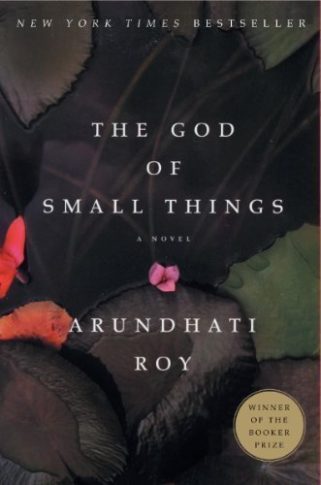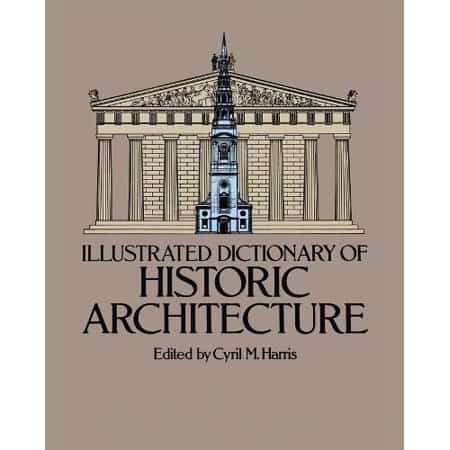The days of adolescence are often filled with flights of fantasy fueled by aspirations and dreams. It is in our teenage years or perhaps even before that, that we begin to recognize our passion. Some might to do it quicker than others, but everyone always wanted to be someone. Perhaps for those of us who have chosen architecture as their dream career, the time and age couldn’t be better.
Architecture is a profession of design and creation. The flashes of a creative and functional design can come and go, but it the perseverance that always comes to aid and architecture books and design magazines are key, seeds for the imagination, fuel for creativity.
From time immemorial, humanity has always wanted to build. Be it a boat, a tool, a raft, or a campfire, the art of designing has been always there. It is the scientific aspect of it that has to be learnt.
For this reason, an aspiring architect may find something inspiring in the texts and novels about to be discussed.
Some of the best Architecture Books follow. For more suggestion , follow our Amazing Books & Films- Best Recommendations
Pinterest Board. Enjoy!
Contents
Simply the Best Architecture Books You Must Read
What can a novel about a motorcycle journey of a father and his son, teach to architects or aspiring architects?
The concept of quality.
If we think about it, what is quality?
Something that can be rationalized or perceived? Or is it a combination of both? Could it emerge from properties of a material, or does it express itself at the hands of a designer? This book tackles those very same questions and the author provides his own interpretation. One thing, however, is quite certain. Quality cannot be faked just like a good investment. A long an exciting journey, that this novel takes on, also attempts to answer similar questions on quality and design.

See on Amazon
One thing which every architect needs to pay attention to, is the small details. The devil is indeed in the details. God of Small things emphasis attention to the most minute of details. In the profession of architecture, finer things hold more value since smaller objects create something that is sum of all things small. As the author said herself, you cannot write a book with a beginning in mind and an end to accompany it. There are layers that you need to add, and characters that need polishing.
Similarly an architect cannot design a house with just an entrance and an exit in mind. It takes a lot of thinking and effort to plan the insides and build accordingly. From the material to be used, to their apparent shape, from the angles and directions of forces, to counteracting stresses caused by the forces, an architect has to think everything through.
The God of Small things teaches exactly this.

See on Amazon
Ancient Architecture deals with the architectural style of the ancients. Some aspects of the book are worth highlighting, to pique interest in the book. It is known that the Egyptians were exceptional architects. The five thousand year old Pyramids of Giza and The Sphinx are the standing proof of that. Architect style of those times relied heavily on strong bases and stone work. The modern science has enabled today’s architects to build some astonishing structures.
Back in the days of thriving Egyptian empire, the kings and queens were buried in big tombs and laden with gifts and golds. Contrary to popular belief, the Pyramids weren’t built by slaves and prisoners, but the evidence suggests that they were built by paid laborers and masons who were well cared for.
The book also mentions the great Roman empire and its architectural achievements. The Roman architecture evolved from the Greek architecture as a branch of it. This is why several similarities are observed between the ancients Greek buildings and the Roman buildings.
Perhaps something which immediately springs to mind when thinking about Roman architecture is the Colosseum. A preposterously huge fighting arena built for the famous gladiators and the occasional main event or parades. The Romans should also be credited for several unique designs like the Obelisco Sallustiano, Arch of Titus and many more.

See on Amazon
This is a book which perhaps describes the architecture of the Victorian era in its every nuance and style.
The Victorian Architecture was heavily influenced by middle Eastern and Asian influences in the later stages of its evolution. Some of the classics of the pre colonial and postcolonial architecture include the famous Big Ben of London, Victoria Memorial in Kolkata, CST station in Mumbai, several cathedrals and churches scattered across the United Kingdom. During the 19th century, when the medieval Gothic style of architecture was facing a revival, some famous buildings like the Fonthill Abbey in Crystal Palace.
It was in this period that several architects started combining modern steel based construction techniques into the Gothic and traditional Renaissance style. Alexander Thomson of Scotland, in the period of early 19th century, pioneered the use of cast iron and steel for commercial buildings.

See on Amazon
He successfully blended neoclassical architectural style with Oriental and Egyptian themes to produce truly original and remarkable themes. This style of designing buildings wasn’t short lived. It quickly spread across the entire United Kingdom like wildfire. Persistent enough to last several decades. Several historic structures spread across the modern day England, speak volumes about the architecture style implemented in the early to late 19th century.
These include the, Victorian pavilion at the Oval, the great Manchester library, Aston Webb building in Birmingham to name a few.
Well written and illustrated by Kenneth Frampton, the book discusses the modern era marvel of 20th and 21st century architecture that humankind has built. There are many structures which draw attention to their design and build. The Sydney Opera House in Australia, the modern skyscrapers like the Petronas Towers and Burj khalifa, hold a very special distinction in today’s architecture.

See on Amazon
Not only can the ancient architectural marvels can teach the modern architects about designs and crafts, but the modern designs can too. With time the modern architecture has evolved at such a pace that if ancients would visit through a time machine, it would seem almost magical to witness such elegant and complicated design.
And that is just the earth to talk about. Skills and experience of an architect is also needed in building something as monumental as the International Space Station. The kind of design considerations to be kept in mind while designing such structures is mind numbing. The book indeed proves to a great read for architect of all ages and minds.
Conclusion
One must not wait for inspiration, for it is something to be obtained from learning and experience. The minds of curious architects and thinkers would enjoy these books and it would only make the process of learning, even more fun.
Perhaps the next great building or station is waiting for the architects on mars or even moon.
Challenges are going to be plenty. Now, it is even more evident, that to sustain humankind on the planet, new ideas and designs are the need of the hour.
Definitely, the students and children among us could take inspiration from the frontline architects and authors, spread across centuries, fuel for creativity might not be something that you put on your architecture portfolio but it is certainly something that will influence it dramatically.
Perhaps it is the question of rediscovering one’s roots instead of discovering them.
